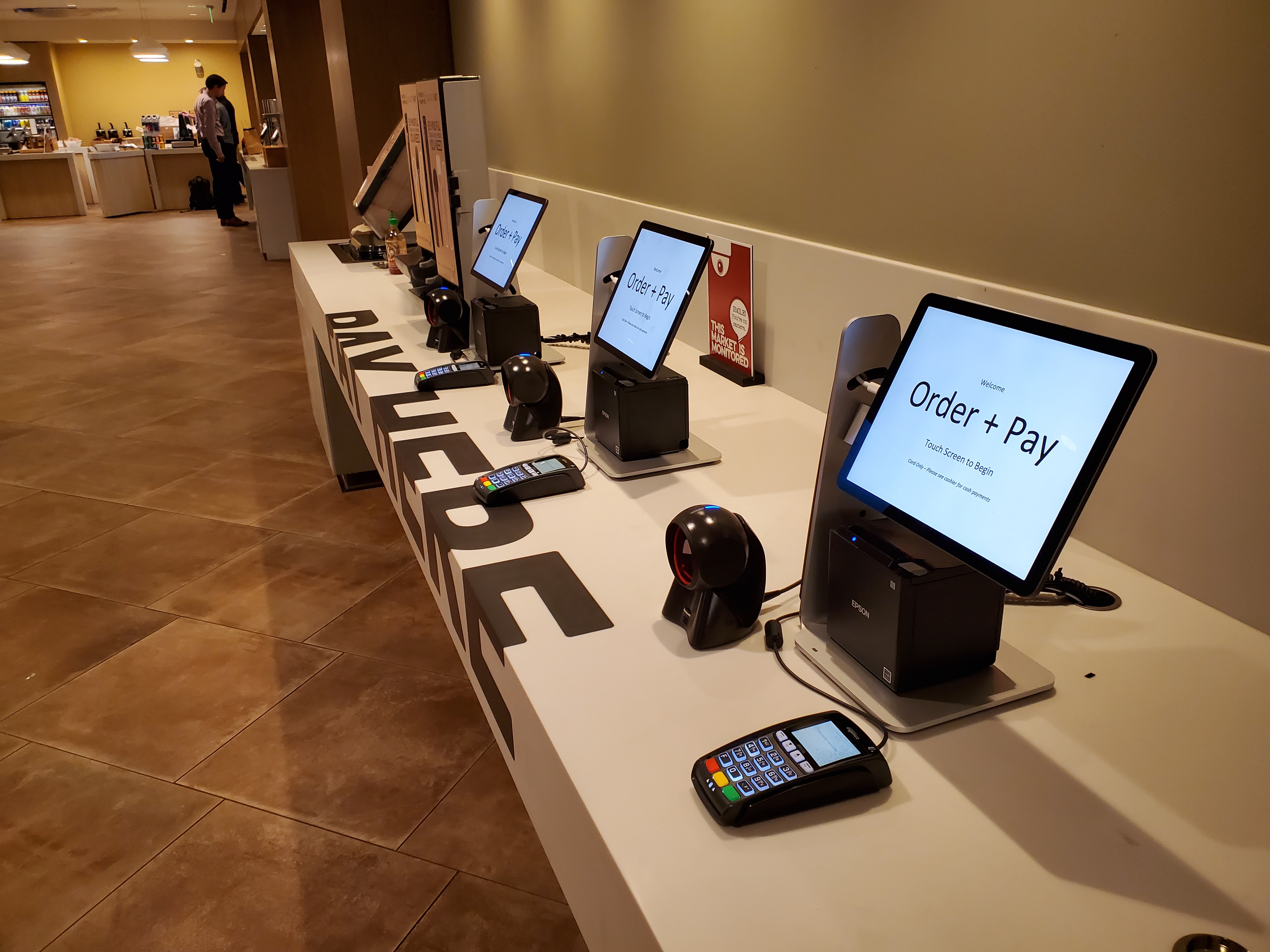Call Sales: +1 (833) 437-3835
Call Sales: +1 (833) 437-3835
Samantha Clark | November 19, 2021 |

Effective retail operations are critical to a store's productivity and profitability; fortunately, managers can control this facet of the business.
It's a fact that grocery retailers/vendors often operate on pretty thin profit margins. On top of that, running a retail store requires various management, marketing, and administrative skills.
These tasks are paramount for your retail store to run smoothly, from ensuring sufficient inventory to making monthly sales reports.
Retail business operations also face significant challenges in the current trading environment, making it vital for them to adopt practices and resources to achieve operational excellence. For instance, a well-organized point of sale (POS) platform streamlines retail store operations considerably.
Efficiency, agility, and speed are expected of retail businesses today. To accomplish this, as a retailer, it is imperative to invest in e-inventory control systems, a point of sales system, an automated forecasting system, and a central database.
These automated systems improve your planning and reduce your overhead seamlessly. As a result, they provide you with a competitive edge to survive, thrive, and grow exponentially in the market.
Even though times are tough, the retail sector continues to evolve to accommodate customer demands. Retail store operators must do their best to navigate the new customer landscape.
So what can a business do to improve its productivity? What advanced techniques can a manager incorporate to make their retail operations more efficient?
Retailers should constantly enhance their store economics by eliminating, automating, and simplifying routine activities to remain viable. In this ever-volatile environment, efficient and optimal use of resources and speed of implementation are crucial.
Here are some advanced techniques to improve your retail operations:
Since profits are dependent on sales, your retail store must optimize inventory management.
Customers expect to visit your store's website and see if a particular item is available before visiting the location.
This makes it imperative to set a system that lets you track all your inventory accurately and anticipate potential click-and-collect and in-store sales for a specific day to ensure that the necessary stock is available.
The state-of-the-art software can simplify the process of determining stock levels so your store manager can order accordingly and maintain enough stock to serve customers.
These programs should also have auto-replenishment features to automate ordering additional stock when the inventory levels reach a specific point.
Another hi-tech option is that of inventory robots that patrol the physical location of a retail store to monitor for broken, leaking, or fallen inventory that may cause staff and shoppers to slip.
This way, you can ensure that the items in the store are positioned safely on shelves so as to prevent any fall hazards. Also, this frees up the store's staff and lets them concentrate on more value-added tasks.
The ramifications of inventory mismanagement have propelled retail decision-makers to invest in analytics for optimizing inventory and channel strategies.
The retail environment, by its nature, is pretty chaotic. From wholesale to retail sales, products have to pass through many hands. And during the last step, it's common for customers to pick up those products, check on them and then put them back on the wrong shelves.
These processes get even more complex with omni-channel retailing. So if you sell online, work with a web developer to give your website the ability to update the inventory numbers automatically every time there's a sale.
You wouldn't want your customer ordering the wrong size or color and returning the item later; it would be just as frustrating to email them later, saying you can't ship their order because it's out of stock. These issues can make shopping with you a frustrating and inconvenient experience for the buyer.
Since customer experience is pivotal to the success of a retail store, this can be a concerning problem. However, with the help of effective analytics, you can bring order and structure to the chaos and enhance the customer experience considerably.
Shopping is becoming automated fast, like a background activity that happens automatically as you go about your everyday life.
Today, customers want their retail experience to be as quick, convenient, and straightforward as possible. While some still enjoy visiting stores to choose a new outfit or browse through the book section, others want the diapers, coffee refills, detergent, etc., to be brought to their home.
Auto-replenishment solutions keep track of recurring orders and resend them to the customer monthly or weekly, so they don't have to bother placing the same order over again.
Over 75 billion devices are connected to the IoT (Internet of Things), including coffeemakers, refrigerators, and more.
Retail is spearheading the replenishment economy where the appliances, cars, connected packaging, and the products themselves re-order whatever they are running low on, with the owner's approval.
Auto-replenishment eliminates two significant concerns: no one ever has to run out of something they need, and they sure don't have to visit the store if they want something. Early adopters report a significant boost in customer loyalty.
Self-checkout initiatives can create a smoother, quicker checkout experience for customers. For instance, you can add various small self-checkout kiosks at your retail stores instead of a single checkout line. This, in turn, can decrease the time shoppers have to wait to make payments for their purchases.
Since consumers are increasing their spending and they desire a fast shopping experience, this can be a significant benefit for retail operations.
By implementing self-checkout kiosks, you can also offer your customers a consistent and seamless experience.
Additionally, these kiosks are designed to minimize errors, so you no longer have to worry about forgetting to give a consumer their receipt or providing an inaccurate amount of change.
When customers receive an excellent experience coupled with an easy and quick checkout service, they are more likely to become repeat customers and return to the store, consequently driving sales and generating greater profits for your retail store.
Furthermore, self-serve kiosks also allow retail brands to market their products in non-store and strategic locations. For instance, a name-brand retailer of sunglasses can arrange a booth at the beach, engaging with people at their usual place of need.
Inventory loss caused by employee theft, shoplifting, paperwork and administrative errors, vendor fraud, and other issues saps on average about 1.33% of sales, according to the National Retail Security Survey (2018) by the National Retail Federation.
That is why stores often deploy tags, attaching them to every item to be deactivated at checkout once the payment is made. This is an effective way to curb theft in retail stores.
These sensors or tags give each product a unique serial number that is encrypted into the inventory management system of the store.
When the product is scanned, the system automatically knows that it is paid for and removed from the store. Also, this info can be verified by the security system as customers exit the store.
Massive technological advancements, the rise of omnichannel operations, and heightened customer expectations are just some of the trends reshaping the retail world.
With thin margins, these alterations can increase uncertainty and cost pressures while presenting significant opportunities to retailers.
Conventional approaches no longer work in the face of a technological revolution; this is the time to make fundamental changes to your retail operating models, clearly define aspirations, and rethink processes.
Use the ideas given above to strengthen your store's security, increase sales and leave customers happy that they choose to buy from you.
A Warrington College of Business graduate, Samantha Clark handles all client relations with The PayStubs’s top-tier partners.
